GERD VA Rating Explained – The Experts Guide (3 *NEW* tips for 2021)
In this post, we will be exploring the GERD VA rating criteria in detail.
In 2021, a veteran’s VA rating for GERD can be 10%, 30%, or 60%.
So, let’s take a minute to explore the law regarding the symptoms and impairment required to warrant a VA disability rating for GERD.
Many veterans suffer from various digestive system issues, to include Gastroesophageal Reflux Disease (GERD).
In addition, GERD is a common secondary VA disability claim, especially GERD secondary to PTSD due to the side effects of medication taken to manage mental health symptoms.
A veteran’s final VA rating for GERD depends upon the frequency and severity of their symptoms, meaning, the more severe your symptoms, the higher the VA rating for GERD.
- GERD VA Disability Rating: What is Gastroesophageal Reflux Disease (GERD)?
- GERD VA Rating: Common Symptoms in Veterans
- Is GERD a VA Disability?
- WATCH: How to Get a 60% VA Rating for GERD
- VA Rating for GERD and Hiatal Hernia
- VA Disability Rating for GERD
- GERD Secondary to PTSD
- C&P Exam for GERD
- About The Author
GERD VA Disability Rating: What is Gastroesophageal Reflux Disease (GERD)?
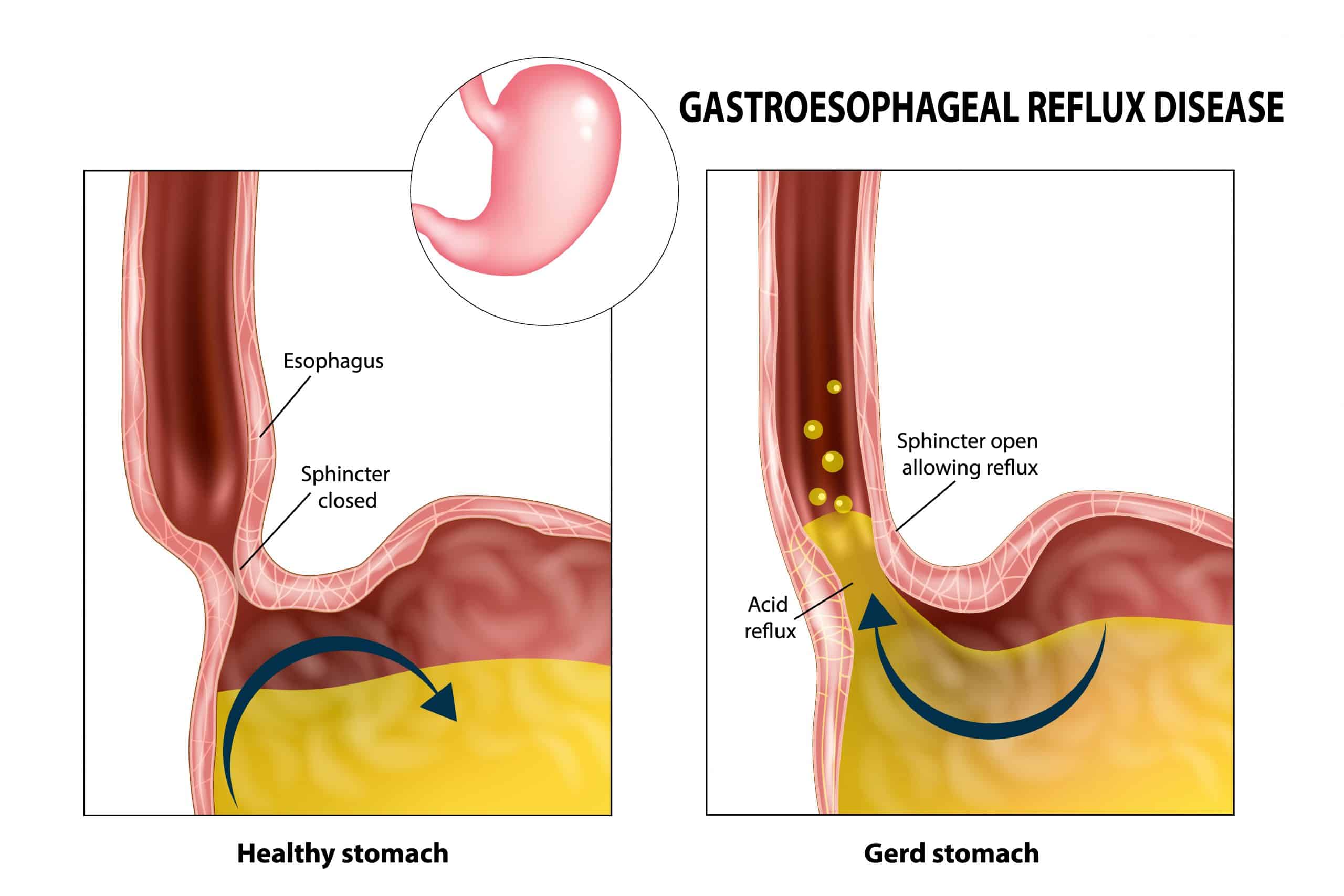
Gastroesophageal Reflux Disease (GERD) occurs when stomach acid repeatedly flows back into the esophagus, which is the tube connecting your mouth and stomach.
When this happens, the lining inside your esophagus can become irritated due to the stomach acid.
This uncomfortable sensation often leads to heartburn or acid reflux.
GERD is a mild form of acid reflux that occurs at least twice a week, or moderate to severe acid reflux that occurs at least once a week.
Most veterans can manage the discomfort of GERD with dietary adjustments, lifestyle changes, and various over the counter or prescription medications.
For example, Omeprazole (or Prilosec) is often prescribed in varying doses to help veterans manage their GERD symptoms.
If your GERD is very severe, veterans may need stronger medications or even surgery in extreme cases to help ease symptoms.
GERD VA Rating: Common Symptoms in Veterans
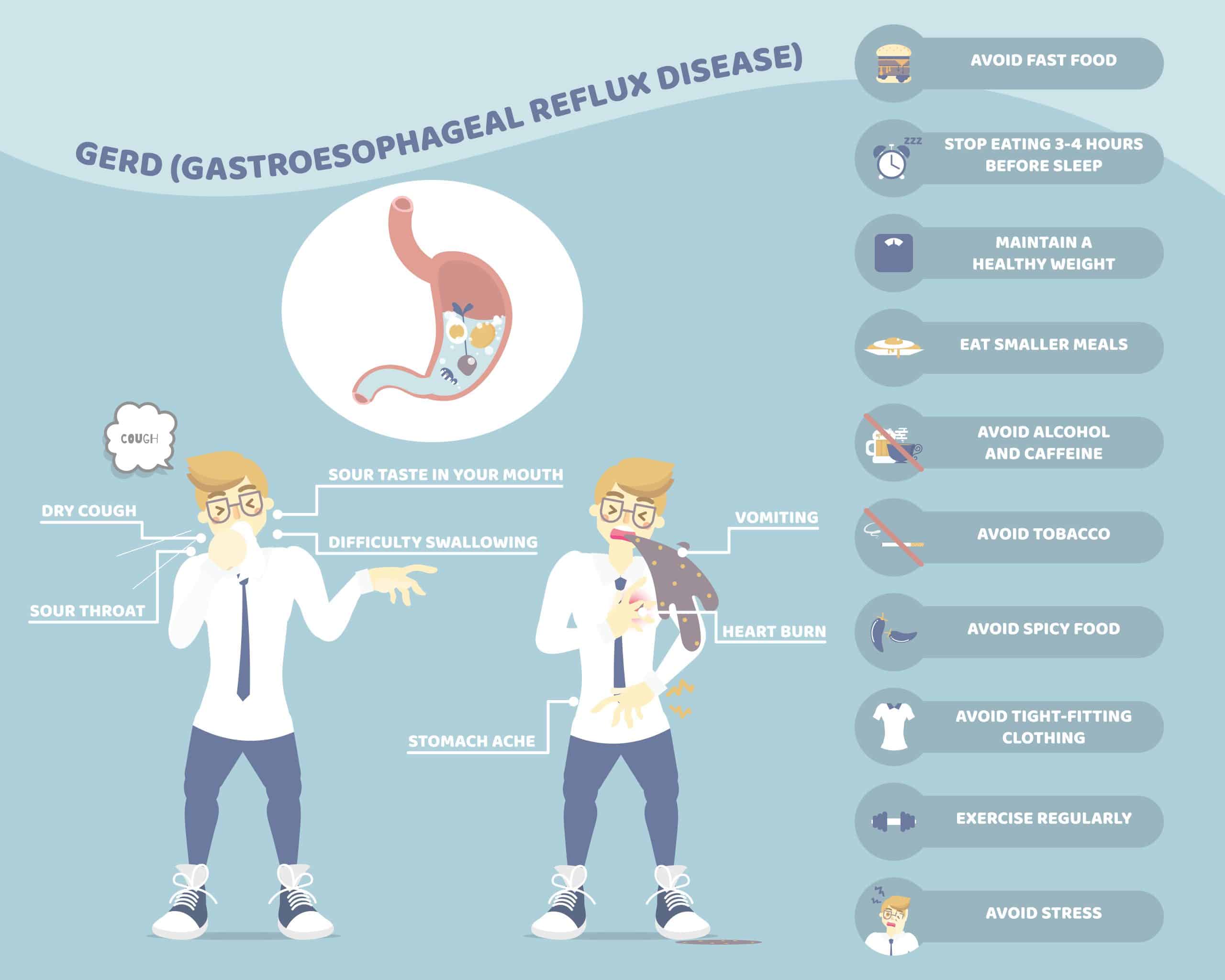
Many veterans have GERD, and according to the Mayo Clinic, common symptoms of GERD involve:
- A burning sensation in your chest (heartburn), usually after eating, which may worsen at night
- Chest pain
- Difficulty eating and swallowing
- Regurgitation of food particles or sour liquid
- Sensation of a lump in your throat
If you have nighttime GERD and acid reflux, you might also experience:
- Chronic cough
- Laryngitis
- New or worsening asthma
- Disrupted sleep and insomnia
Is GERD a VA Disability?
Yes, GERD is a VA disability and can be rated at 10%, 30%, or 60%, depending upon the severity of your symptoms.
GERD is most often rated under CFR 38, Part 4, VA Schedule of Ratings, Diagnostic Code 7346, Hernia Hiatal.
✔️ Wondering how to get a GERD VA Rating?
Are you stuck, frustrated, and underrated?
Join VA Claims Insider Elite, get instant access to the ELITE Experience Portal (EEP) and $13,119 worth of proprietary VA claim resources and start FREE today:
>> Click HERE Now to Join VA Claims Insider Elite and Start for FREE Today! <<
WATCH: How to Get a 60% VA Rating for GERD
In this video, Brian Reese VA Insider, breaks down: “How to Get a 60 Percent VA Disability Rating for GERD!”
VA Rating for GERD and Hiatal Hernia
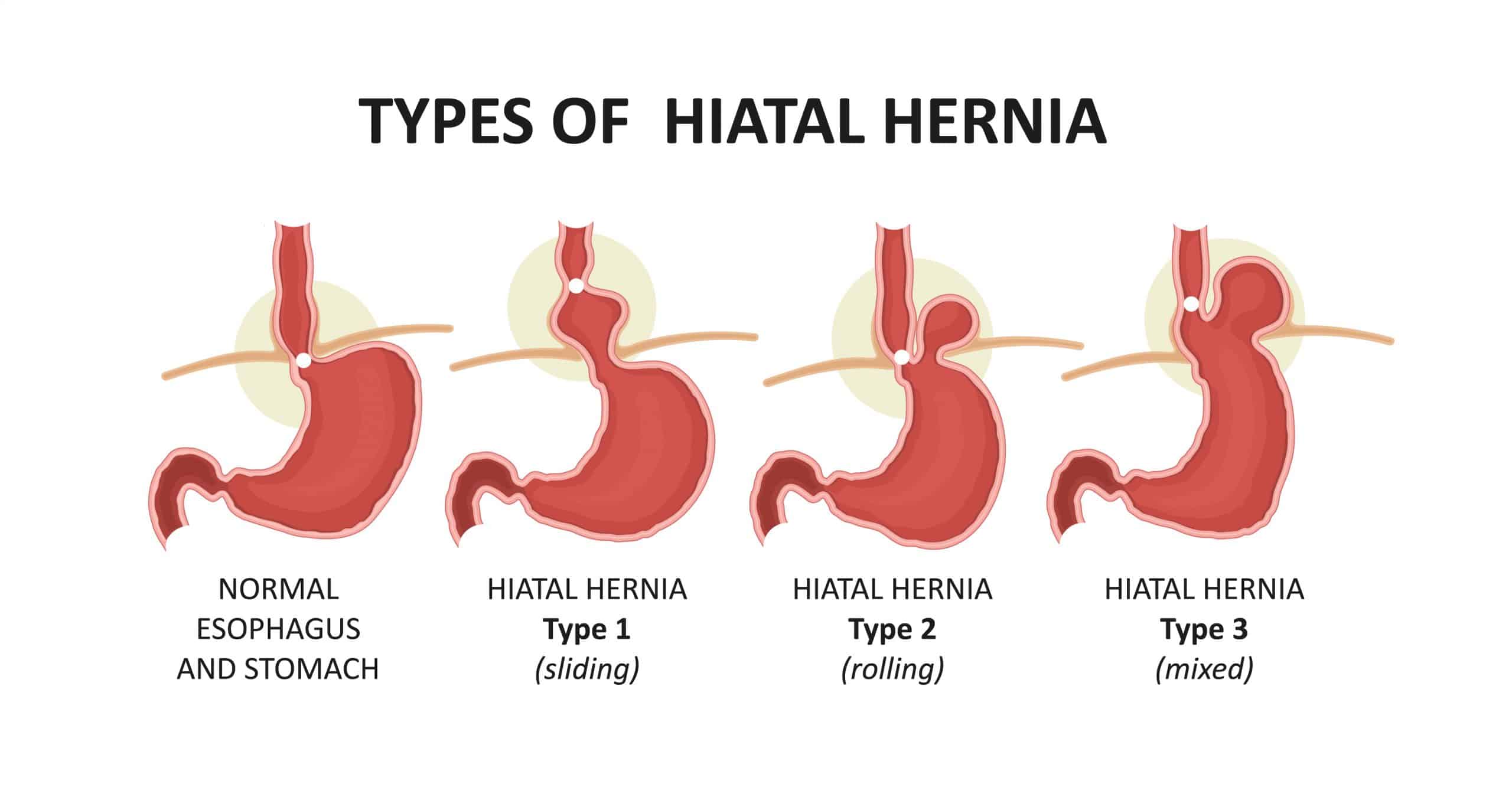
There are various diseases of the digestive system, which produce a common disability picture characterized by varying degrees of acid reflux, abdominal distress or pain, anemia and disturbances in nutrition.
Therefore, certain coexisting diseases of the digestive system do not lend themselves to distinct and separate disability ratings without violating the fundamental principle of pyramiding.
Ratings under Diagnostic Codes 7301 to 7329, inclusive, 7331, 7342, and 7345 to 7348, inclusive, will NOT be combined with each other.
A single rating for GERD will be assigned under the Diagnostic Code which reflects the predominant disability picture, with elevation to the next higher rating where the severity of the overall disability warrants such elevation. See 38 C.F.R. § 4.114.
The Veteran’s GERD and digestive disability is currently rated by analogy to hiatal hernia under 38 C.F.R. § 4.114, Diagnostic Code 7346, as that code is normally used to rate GERD due to similarity of symptom presentation.
There is no other pertinent diagnostic code for GERD.
VA Disability Rating for GERD
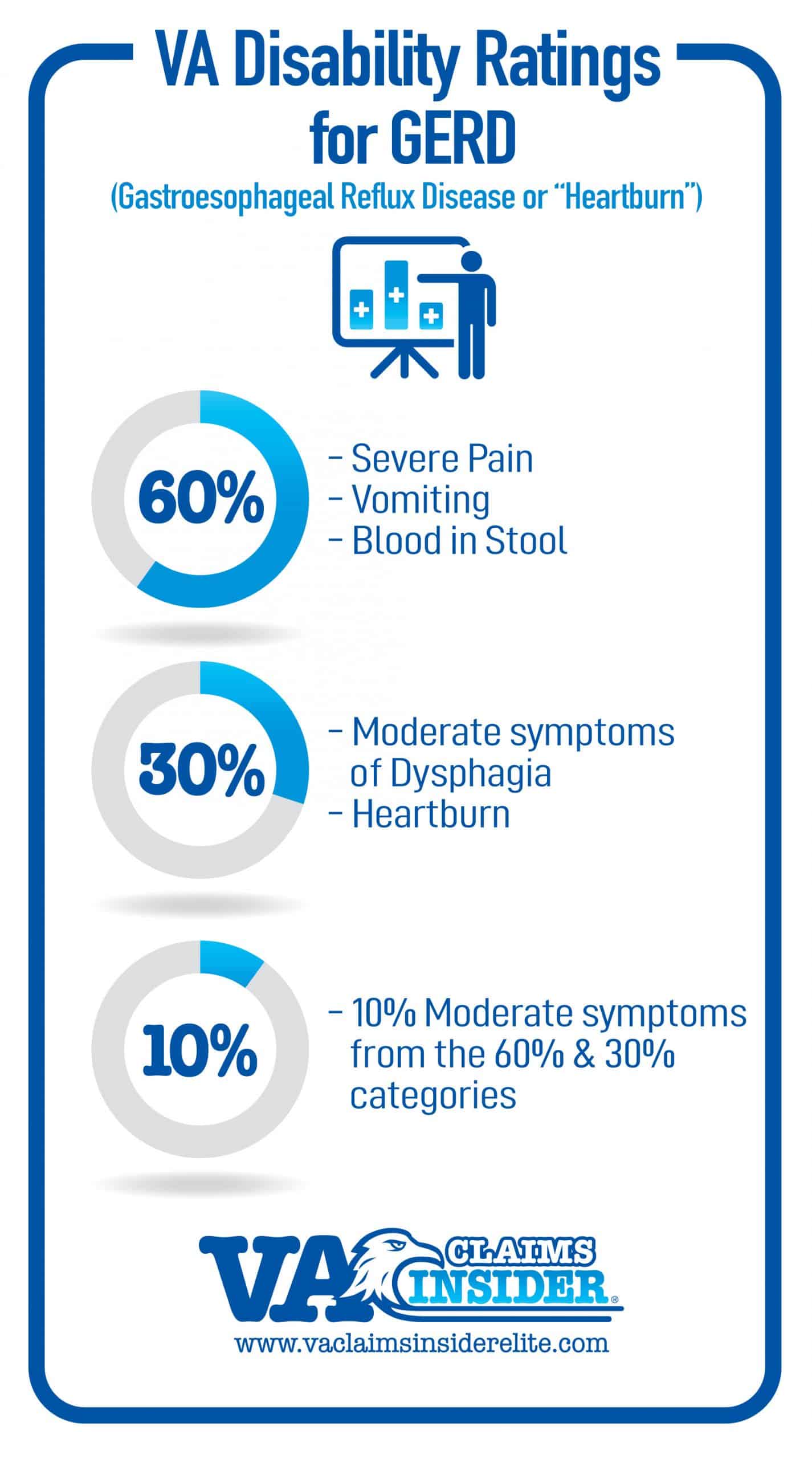
GERD VA Ratings range from 10% to 60%, with an interim break at 30%.
A veterans final VA disability rating for GERD depends upon the frequency, severity, and duration of your symptoms, meaning, the more severe your symptoms, the higher the VA rating for GERD.
There is no separate diagnostic code for GERD, and it’s most commonly assigned a VA rating analogous to diagnostic code 7346, Hernia Hiatal:
| Diagnostic Code 7346 Hernia Hiatal – GERD VA Rating Chart | |
| Symptoms of pain, vomiting, material weight loss and hematemesis or melena with moderate anemia; or other symptom combinations productive of severe impairment of health | 60% |
| Persistently recurrent epigastric distress with dysphagia, pyrosis, and regurgitation, accompanied by substernal or arm or shoulder pain, productive of considerable impairment of health | 30% |
| With two or more of the symptoms for the 30 percent evaluation of less severity | 10% |
A 60 VA Rating for GERD is warranted when there are symptoms of pain, vomiting, material weight loss, and hematemesis or melena with moderate anemia; or other symptom combinations productive of severe impairment of health.
A 30 VA Rating for GERD is warranted when there is persistently recurrent epigastric distress with dysphagia, pyrosis, and regurgitation, accompanied by substernal or arm or shoulder pain, productive of considerable impairment of health.
A 10 VA Rating for GERD is warranted with two or more of the symptoms for the 30 percent evaluation of less severity.
GERD Secondary to PTSD
Many veterans with GERD or acid reflux, especially those who were diagnosed long after leaving the military are eligible under the law for GERD secondary to PTSD.
For example, if veterans are taking SSRIs to help manage their PTSD symptoms, perhaps you’re suffering from side effects of those SSRI medications, which can lead to digestive system issues.
Thus, veterans can get a GERD VA rating secondary to PTSD.
Service connection on a secondary basis requires a showing of causation.
A showing of causation requires that the secondary disability be shown to be “proximately due to” or “proximately aggravated by” another service-connected disability.
By law, there are three evidentiary elements that must be satisfied for GERD secondary to PTSD to prove secondary service connection:
- A medical diagnosis of GERD in VA medical records or private records (unless you already have a diagnosis of GERD in your service treatment records)
- Evidence of a service-connected primary disability (such as PTSD, depression, anxiety, migraines, IBS), AND
- Medical nexus evidence establishing a connection between the service-connected disability (PTSD) and the current disability (GERD)
The first part can be satisfied with any existing medical evidence in service treatment records, VA medical records, or any private medical records.
The second part can be satisfied with a veteran’s existing service-connected disability rated at 0 percent or higher.
The third part can be satisfied with a medical nexus letter from a qualified medical professional.
C&P Exam for GERD
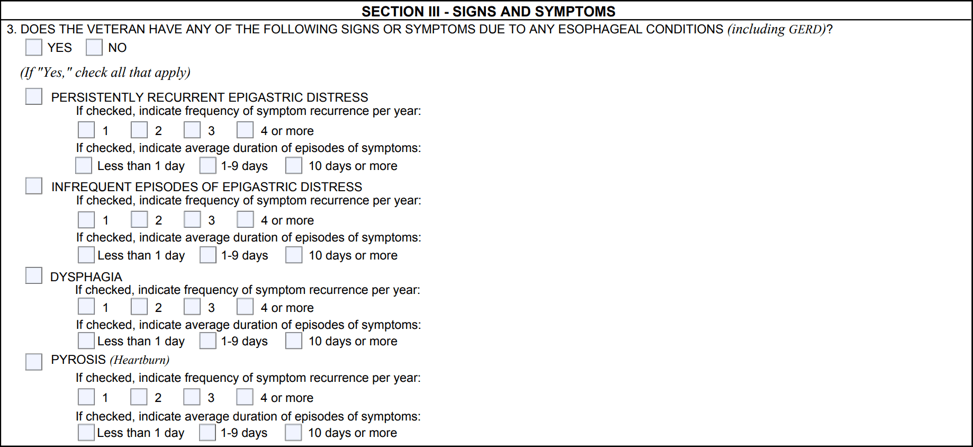
A C&P exam for GERD usually involves a physical examination and history of your signs and symptoms over time.
Lately, C&P examiners have been administering blood tests during a veterans C&P exam for GERD, which is to screen for Anemia.
The only accurate way to test for Anemia is through a blood test.
You’ll want to explain to the C&P examiner HOW your GERD symptoms are limiting or affecting your work, life, and social functioning.
For example, how often do you have symptoms of GERD?
How severe are your GERD symptoms and do they limit or affect your work, life, and social functioning?
You’ll want to review the GERD DBQ form prior to your C&P exam for GERD, specifically Section III, Signs and Symptoms, with special emphasis on frequency, severity, and duration of your esophageal symptoms.
About The Author
Brian Reese is VA disability expert, former Air Force captain, and founder of VA Claims Insider – “The Most Trusted Name in Education-Based Resources for Veterans.”
His frustration with the 8-step VA disability claims process led him to create “VA Claims Insider,” which provides U.S. military veterans with tips, strategies, and lessons learned for successfully submitting or re-submitting a winning VA disability compensation claim.

Brian is also the CEO of Military Disability Made Easy, which is the world’s largest free searchable database for all things related to DoD disability and VA disability claims and has served more than 4,600,000 military members and veterans since its founding in 2013.
His eBook, the “9 Secrets Strategies for Winning Your VA Disability Claim” has been downloaded more than 300,000 times in the past three years and is the #1 rated free VA disability claims guide for veterans.
He is a former active duty Air Force officer with extensive experience leading hundreds of individuals and multi-functional teams in challenging international environments, including a combat tour to Afghanistan in 2011 supporting Operation ENDURING FREEDOM.
Brian is a Distinguished Graduate of Management from the United States Air Force Academy, Colorado Springs, CO and he holds an MBA from Oklahoma State University’s Spears School of Business, Stillwater, OK, where he was a National Honor Scholar (Top 1% of Graduate School class).
